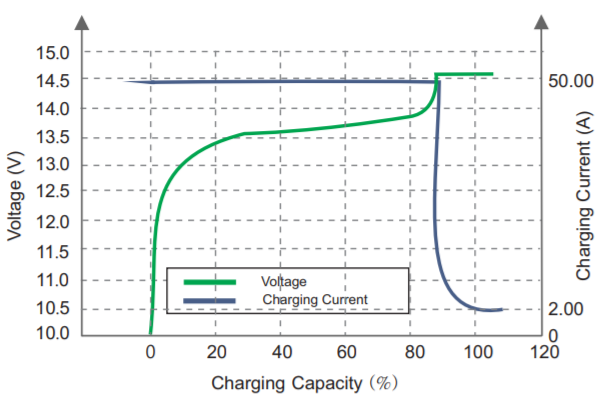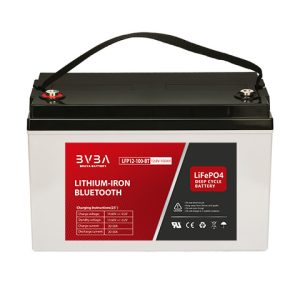12V150Ah Prismatic Cell LiFePO4 Battery
Prismatic Cell LiFePO4 Battery General Features & benefits.
- Longer Cycle Life: Offers up to 20 times longer cycle life and five times longer float/calendar life than lead acid battery
- Lighter Weight: About 40% of the weight of a comparable lead acid battery.
- Higher Power: Delivers twice power of lead acid battery
- Wider Temperature Range: -20 ºC ~60 ºC
- Superior Safety: Lithium Iron Phosphate chemistry eliminates the risk of explosion or combustion due to high impact,overcharging or short circuit situation.
- Maintenance free
- Internal cell balancing
- Built-in automatic protection for over-charge, over discharge, over current and over temperature
Tags in this article: Lithium Battery. LiFePO4 battery.

LiFePO4 Battery Product Application
- Medical equipment
- Wind energy storage system
- Mobility,Electric vehicles
- Data Center
- Transport Telecommunication
- Sports & Recreation
- UPS, backup power
- Lighting Utility
- replacement PSL-BTP-121000 RBT100LFP12-BT-US
Standards & Certifications
- Compliance with IEC 60896 standards, EU Battery Directive
- UL, CE Certified
- Manufactured in ISO45001,ISO 9001 and ISO 14001 certified production facilities
- Compliance with IEC 60896 standards,certified production facilities
LFP12-150 Prismatic Cell LiFePO4 Battery Specifications
| Rated Voltage |
12.8V
|
|
| Nominal Capacity | 150Ah |
(@0.2C)
|
| Internal Resistance(25℃) |
Approx 20mΩ
|
|
| Dimension | Length |
330±2mm ( 12.99 inches)
|
| Width |
173±2mm (6.81 inches)
|
|
| Container Height |
212±2mm (8.35 inches)
|
|
| Total Height |
220±2mm (8.66 inches)
|
|
| Weight |
Approx. 13.1 Kg(28.66 lbs)
|
|
| Terminal |
M8
|
|
| Container Material |
ABS
|
|
| Efficiency of Charge | 100% @0.2C | |
| Efficiency of Discharge | 96 ~99% @1C | |
| Operating Temp. Range | Discharge |
-20~60℃ (-4~140℉)@60±25% Relative Humidity
|
| Charge |
0~55℃ (32~131℉)@60±25% Relative Humidity
|
|
| Storage |
-20~45℃ (-4~113℉)@60±25% Relative Humidity
|
|
| Nominal Operating Temp.Range |
25±5℃ (77±5℉)
|
|
| Cycle Life | >2000 cycles @ 0.2C 100% DOD | |
| Charge Voltage | 14.6±0.2V | 14.6±0.2V (Cut-off Voltage) |
| Charge Current | 50A |
100A(Max.)
|
| Charge Mode |
0.2C to 14.6V, then 14.6V,charge current to 0.02C (CC/CV)
|
|
| Rated Discharge Current | 50A (100A Max.) |
200A(<3s) and Discharge Cut-off@10v
|
| Self Discharge |
<3% per month at 25℃ |
|
Battery Structure Diagram

Lifepo4 Battery Charging/Discharge Curve
|
Different Rate Discharge Curve(25℃)
|
Temperature Discharge Curve(0.5C)
|
|
 |
|
|
|
State of Charge Curve(0.5C, 25℃)
|
Charging Characteristics(0.5C, 25℃)
|
|
 |
 |
|
|
Different DOD Discharge Cycle Life Curve(1C)
|
Different Temperature Self Discharge Curve
|
|
 |
 |
How To Choose Lithium Battery PACK
When considering solar cell options, you need to compare different lithium batteries based on capacity, depth of discharge (DOD), battery life, and more to find the best battery for your PV system based on your needs.
1. Capacity
Capacity is the total amount of electricity that a solar cell can store. This data is usually measured in watt-hours (Wh) or kilowatt-hours (kWh).
2. Depth of Discharge (DOD)
The depth of discharge (DOD) indicates the battery capacity used. The higher the DOD, the more usage you get from the battery capacity. Most solar batteries come with a recommended DOD to keep the battery healthy. Lithium ion batteries are deepcycle batteries and have up to 100% DOD, meaning you can use more of the energy stored in lithium-ion batteries without recharging as often as you would with other batteries. This also gives them a long service life and capacity is 25-50% higher than similar lead acids.
3. Cycle Life
Cycle life is the number of charge and discharge cycles that a battery can complete before it loses performance. Lithium iron phosphate batteries have more than 2000 cycles, while lead-acid batteries typically only reach between 500 and 1200 cycles. Assuming that one cycle is used each day, then a battery with a cycle life of 2000 retains its performance for five and a half years; a battery that boasts 4000 cycles can be used for more than ten years.
4. Continuous Charging and Discharging Rate
The charge-discharge rate refers to the constant current value output by the battery, when it is charged from an empty state to a fully charged state or discharged from a fully charged state to an empty state, within a specified time. For example, the Renogy 12V 100Ah Smart Lithium Iron Phosphate Battery has a rated capacity of 100Ah and can be discharged for 1 hour at a 100A discharge current, known as 1C discharge. Additionally, the Renogy 12V 100Ah Smart Lithium Iron Phosphate battery with a self-heating function will automatically start running when the battery temperature drops below 41°F (5°C) while charging to ensure excellent battery performance.
5. Battery Life and Warranty
If you’ve owned a laptop or smartphone for a few years, you’ve probably noticed that the battery doesn’t last as long in the years after that as it did when it first started. As each charge and discharge cycle progresses, the battery’s ability to remain charged decreases. Temperature can also affect battery life. High temperatures mean faster reactions, so batteries discharge faster; low temperatures mean batteries have to work harder and charge at higher voltages.
Most batteries come with a warranty that guarantees the battery over a certain number of cycles or for a specified period. Like panels, inverters, or other solar equipment, choosing a well-known manufacturer with a long history is the safest option, as they are more likely to deliver on these promises.
6. Choose Reputable Manufacturers
Related Products:
Related Products Application:
What Type Lithium Battery Benifit for Your Application
Related Posts:
Product Datasheet Download:
Datasheet LFP12-150
Datasheet LFP24-100
Datasheet LFP12-100
Tags: Lithium Battery. LiFePO4 battery.
Related products
-
LA Replaced Series
LFP12-33 12V33Ah LiFePO4 Battery || Replac EXP1233 RA12-33 Bat-Caddy X3R ES33-12 PS33-12D CSB GP12340 BP35-12
Read moreRated 0 out of 5 -
Lithium Battery
LFP20L-BS motorcycles LiFePO4 battery || Replace YB16L-B, YB16CL-B, YB16HL-A-CX YB18L-A YTX20, YTX20L, YTX20L-BS
Read moreRated 0 out of 5 -
LA Replaced Series
LFP12-100-BT 12V100Ah LiFePO4 battery with Bluetooth || Replac PSL-BTP-121000 RBT100LFP12-BT-US
Read moreRated 0 out of 5
















